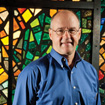Commentary on 1 Corinthians 3:10-11, 16-23
I recently asked a friend for some advice about painting my house.
He stressed that proper preparation was everything. Make sure you replace rotten wood, scrape, prime, and do the trim work before laying the actual coat of paint. “Eighty percent of painting a house is getting the prep work done right,” he said. “If you take care of that then you will be surprised how easy the actual job of painting the house is.”
Proper preparation is essential. In other words, you have to have the right foundation in order for the finished work to endure the wind, rain, and summer sun that is sure to follow. Paul is striking a similar note in his comments to the fractious church at Corinth. This community is being torn apart by arguments about authority (Paul? Cephas? Apollos?…see 1: 12-13) and wrestling with questions about sexual morality and marriage (chapters 5 and 7), lawsuits (chapter 6), and riotous behavior at the Lord’s Supper (chapter 11), among other things. Paul is seeking to call this distracted church back to the essentials by reminding them that “no one can lay any foundation any foundation other than the one that has been laid; that foundation is Jesus Christ” (3: 11).
Preachers in the early part of the twenty-first century have to wrestle with the phenomenon known as “post-modernism.” One way to define this term is centered on the whole notion of “truth.” Defenders of post-modern viewpoints often say there is no such thing as “truth.” There are only a variety of perspectives, none of which can be called a norm. Applied to the image of a house, post-moderns might be impatient with preparing a foundation. Just get the job done in whatever way that works best.
Now it is unlikely that a great number of people in the pews have been pondering post-modernism. But that does not render the concept irrelevant. For many of us in the West, God is no longer in the center of our lives (i.e. the foundation). God is not a “given,” in the sense that we feel an obligation to account for our lives to a supreme power. In our age, the “self” is now central, and God and faith become important insofar as they help us manage our lives. God has been put in his place, so to speak. And if things go wrong (illness, suffering, setbacks) it is only proper that we call on God to justify his ways to humanity.
Note that this is not a rejection of faith. There is still room for Christ, but not as a foundation. Christ is there to help us cope with life or to help out in emergencies. He serves primarily as a rescuer, who gets out of the tight spots that we cannot handle on our own.
This is a far cry from what Paul has in mind in our text. Christ is not merely one option among many but the very source or foundation from which we live our lives. A great resource for preachers at this point might be the writings of the twentieth century martyr, Dietrich Bonhoeffer. Much of his work involved moving Christ to the center, countering the tendency to place him at only the margins of life. Interpreters might consult his series of essays in the The Cost of Discipleship1 or his book Life Together.2
No Ordinary Building
We are still not done with images of building and construction. Talk of foundations leads naturally to another theme in our text: the temple. Given the common foundation in Christ, Paul appeals for unity at Corinth: “Do you know that you are God’s temple and that God’s spirit dwells in you?” (3: 16). A couple of items deserve special attention.
Listeners need to be aware of the special role that the temple played in the lives of the Jewish people. Following its return from captivity in Babylon, Israel rebuilt its destroyed temple. This building received a special emphasis in the lives of the Jews. It was the center of Israel’s worship. The Jews believed the Holy of Holies (the innermost sanctum) contained the very presence of God. Only on Yom Kippur-once a year-was the high priest allowed to enter this space and offer a sacrifice for the sins of the nation.
Paul’s identification of the community with the temple was a real eye-opener. This church, heavily divided by conflict, is identified as God’s temple (note the present tense language): “For God’s temple is holy, and you are that temple” (3:17). One can hardly imagine a bigger contrast between the reality of Corinth and the holiness of God! But Paul does not compromise. Corinth is holy because God’s spirit dwells in it. Holiness is not Corinth’s possession. It is a gift that has been given to it by Christ.
Preachers might want to make a link here with the crucifixion scene in the gospel of Mark. Recall that at the moment of Jesus’ death “the curtain of the temple was torn in two, from top to bottom” (Mark 15: 38). This is the curtain that separated the Holy of Holies from the rest of the building. In other words, in the crucifixion of Christ, God stands “exposed,” revealed to the world for what kind of deity he really is: one willing to conquer sin and death so that his people might truly be free. Moreover, the cross of Christ now means a new definition for “temple.” It is no longer confined to a physical space in Jerusalem. The temple exists where God’s holiness exists. And God’s holiness is now on the loose. Wherever Christ’s love is proclaimed and heard, a foundation is laid and up springs a temple. Even in unlikely settings such as Corinth or our own congregations.
1Dietrich Bonhoeffer, The Cost of Discipleship (New York: Simon and Schuster, 1959).
2 Dietrich Bonhoeffer, Life Together (New York: Harper and Row, 1954).

February 20, 2011